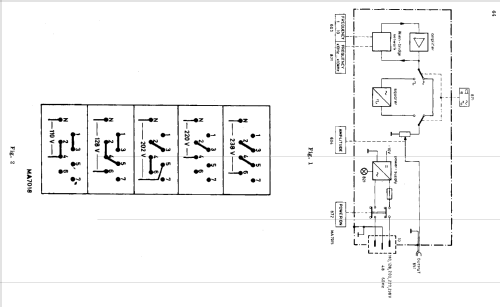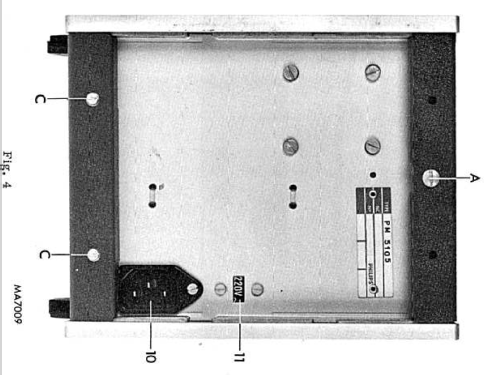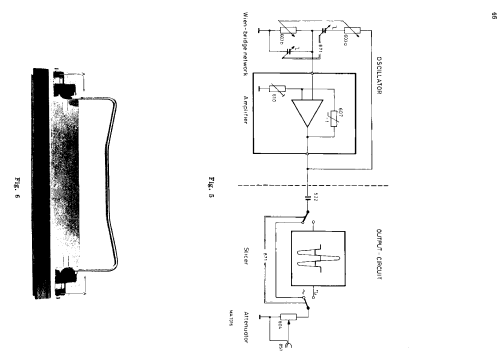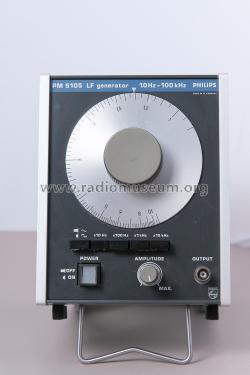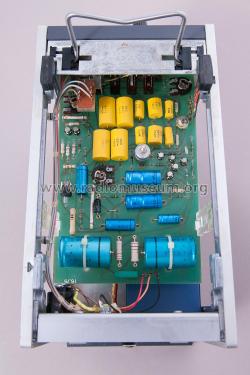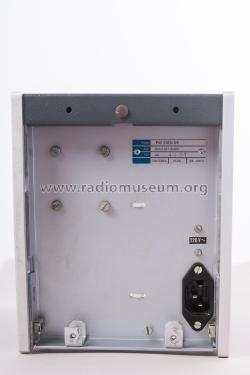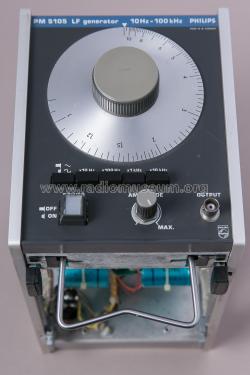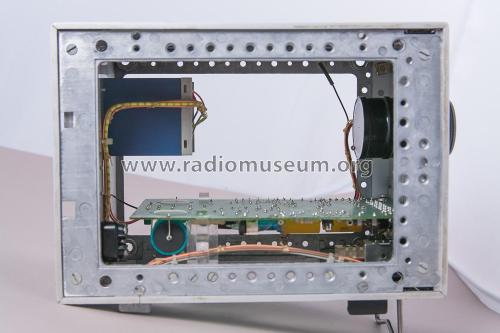LF Generator PM 5105/07
Philips Radios - Deutschland
- Country
- Germany
- Manufacturer / Brand
- Philips Radios - Deutschland
- Year
- 1970 ??
- Category
- Service- or Lab Equipment
- Radiomuseum.org ID
- 211148
-
- Brand: Deutsche Philips-Ges.
Click on the schematic thumbnail to request the schematic as a free document.
- Number of Transistors
- 12
- Semiconductors
- Main principle
- Audio-Amplification
- Wave bands
- Wave Bands given in the notes.
- Power type and voltage
- Alternating Current supply (AC) / 110; 220 Volt
- Loudspeaker
- - For headphones or amp.
- Material
- Metal case
- from Radiomuseum.org
- Model: LF Generator PM 5105/07 - Philips Radios - Deutschland
- Shape
- Tablemodel, with any shape - general.
- Dimensions (WHD)
- 180 x 140 x 250 mm / 7.1 x 5.5 x 9.8 inch
- Notes
- Philips LF-Generator PM5105;
Niederfrequenz-Generator 10 Hz bis 100 kHz in 4 Bereichen,
Kurvenform Sinus oder Rechteck umschaltbar,
Innenwiderstand/Impedanz 600 Ohm,
Ausgangsspannung max. 20 Vss, stufenlos regelbar (ungeeicht),
Ausgang unsymmetrisch auf BNC-Buchse.
Generatore di segnali LF (Low Frequency) da 10Hz a 100kHz con forma sinusoidale o rettangolare.
- Net weight (2.2 lb = 1 kg)
- 2.7 kg / 5 lb 15.2 oz (5.947 lb)
- Author
- Model page created by Antonio Marra. See "Data change" for further contributors.
- Other Models
-
Here you find 2547 models, 2259 with images and 1565 with schematics for wireless sets etc. In French: TSF for Télégraphie sans fil.
All listed radios etc. from Philips Radios - Deutschland
Collections
The model LF Generator is part of the collections of the following members.
Forum contributions about this model: Philips Radios -: LF Generator PM 5105/07
Threads: 2 | Posts: 7
I have a Philips PM 5105 Low Frequencies Generator and I need some tips for the alignment.
I have the service manual but the alignment potentiometers and trimmers (610, 516, 513, 605 and 621-523) are not sufficient to make the equipment work as it should.
As an example, the 400 Hz scale is reading 316 Hz on my oscilloscopes (Hantek and Siglent).
1 KHz is reading 2,4 KHz on the oscilloscopes.
The tension on the diode 452 is -16,7 V as expected.
Maybe the equipment is consuming more than the specified: It should be 4,5 W but I did measure 7,1 W on a non reliable meter. The same device is measuring 80mA for the PM 5105.
I did try the equipment (the first time that I did turn it on) on a dim bulb tester and variac and it was OK.
I did try to adjust it on the trimmers according with the manual to no avail.
Are the electrolytics the culprits? Are the transistors?
Thanks,
Alvaro Georg
Alvaro Georg, 14.Mar.23
Diesen Generator habe ich an Schulen inkl. Fachhochschule, in Lehrwerkstätten und auch in Reparatur Werkstätten angetroffen. Der Grund ist einfach:
- Klare und einfach Bedienung
- sehr sauberes Sinus Signal mit tiefem Klirrfaktor dank Wienbrücke
- einfache und dennoch robuste Schaltungstechnik
- sehr reparaturfreundlich, gut dokumentiert und gängige, gut beschaffbare Teile
- erstaunlich lange Lebensdauer, hält sich gut , kein Rost, dafür langlebige Bauteile
Für mich ein tolles Stück Analogtechnik. Besonders erfreulich, dass nun im Netz auch noch das Service Manual zu finden war.
Wünsche jedem Besitzer viel Freude an diesem tollen Generator.
Hermann Mettler, 05.May.21
